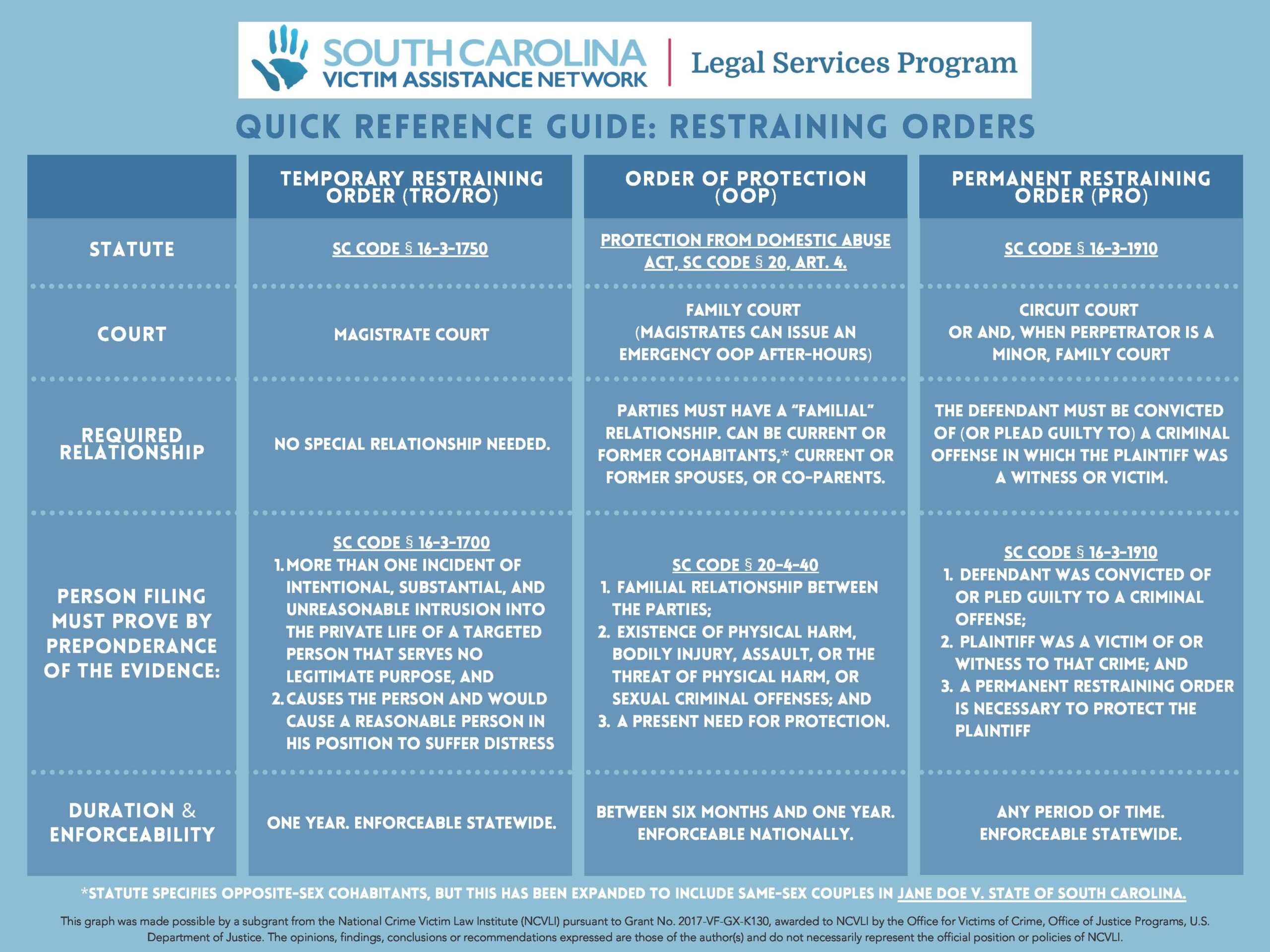Restraining Orders
The Family Court Clerk of Court has simplified petition forms which you can fill out and file at their office. If you have an attorney, he or she can help you file a Petition for an Order of Protection. After the Petition has been filed, the Clerk of Court will schedule a hearing in Family Court. The Clerk of Court will notify you about the date and time of the hearing and Law Enforcement typically serves the abuser with the filing and hearing notice. At the hearing, each of you will have the opportunity to present your case to the judge. Many local domestic violence shelters help victims in obtaining this paperwork and may have an advocate available to accompany them to court.
In general, crime victims do not need legal representation at Order of Protection hearings because the hearings are designed for unrepresented persons. However, both parties have a legal right to an attorney. We strongly recommend that you have an attorney represent you at an Order of Protection hearing.
A victim of stalking or harassment can petition for a Temporary Restraining Order (also known as a Restraining Order) through the Magistrate’s Court. This temporary order lasts for up to one year. To file a petition, a victim can visit the Magistrate’s Court Clerk where the proper forms will be available. There is no requirement that there be an incident report or even an arrest to apply for this type of restraining order. Temporary restraining orders forbid the offender from abusing and contacting the victim, and last for one year. There is no initial fee, but the losing side does have to pay a $55 fee after the case is decided.
Permanent Restraining Orders are available to victims of or witnesses to certain crimes at the time of sentencing in General Sessions Court or after sentencing in the Court of Common Pleas. These restraining orders can last for a specific period (such as twenty years), or may last for a lifetime. The following requirements must be met: (1) the crime occurred in South Carolina, (2) the respondent was convicted or plead guilty, and (3) the requestor suffered direct or threatened physical, psychological, or financial harm as a result of the crime. Qualifying crimes include: Harassment, Stalking, Domestic Violence, Criminal Sexual Offenses, and attempts to commit any of the qualifying crimes. These orders forbid the offender from abusing, threatening, or harassing the victim. The quickest way to obtain a Permanent Restraining Order is by talking with the Solicitor so it can be requested at the time of sentencing. If it is not requested at the time of sentencing, the victim can still file a civil action with the Court of Common Pleas.
Learn more on how to register here.
There are several kinds of restraining orders: Emergency, Temporary, and Permanent Restraining Orders and Orders of Protection. Each varies in length. Emergency Orders last up to 14 days, Temporary Restraining Orders and Orders of Protection can last up to one year, and Permanent Restraining Orders can last for a lifetime.

An Order of Protection (OOP) is a Family Court order that protects a victim from domestic abuse by a spouse, a former spouse, former cohabiting romantic partner, cohabitating romantic partner, or person with whom they have a child in common. It provides temporary protection from abuse, threats of abuse, stalking, or harassment. When appropriate, it can be tailored to each person’s circumstances to include provisions for such things as temporary custody and financial support, possession of the residence (when the parties are married), and even care of pets.
